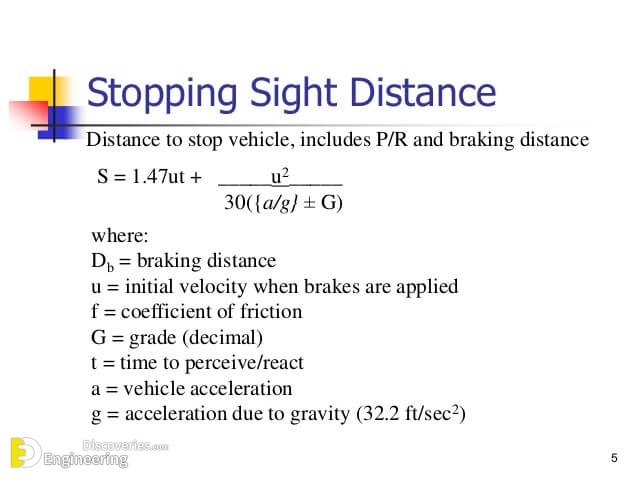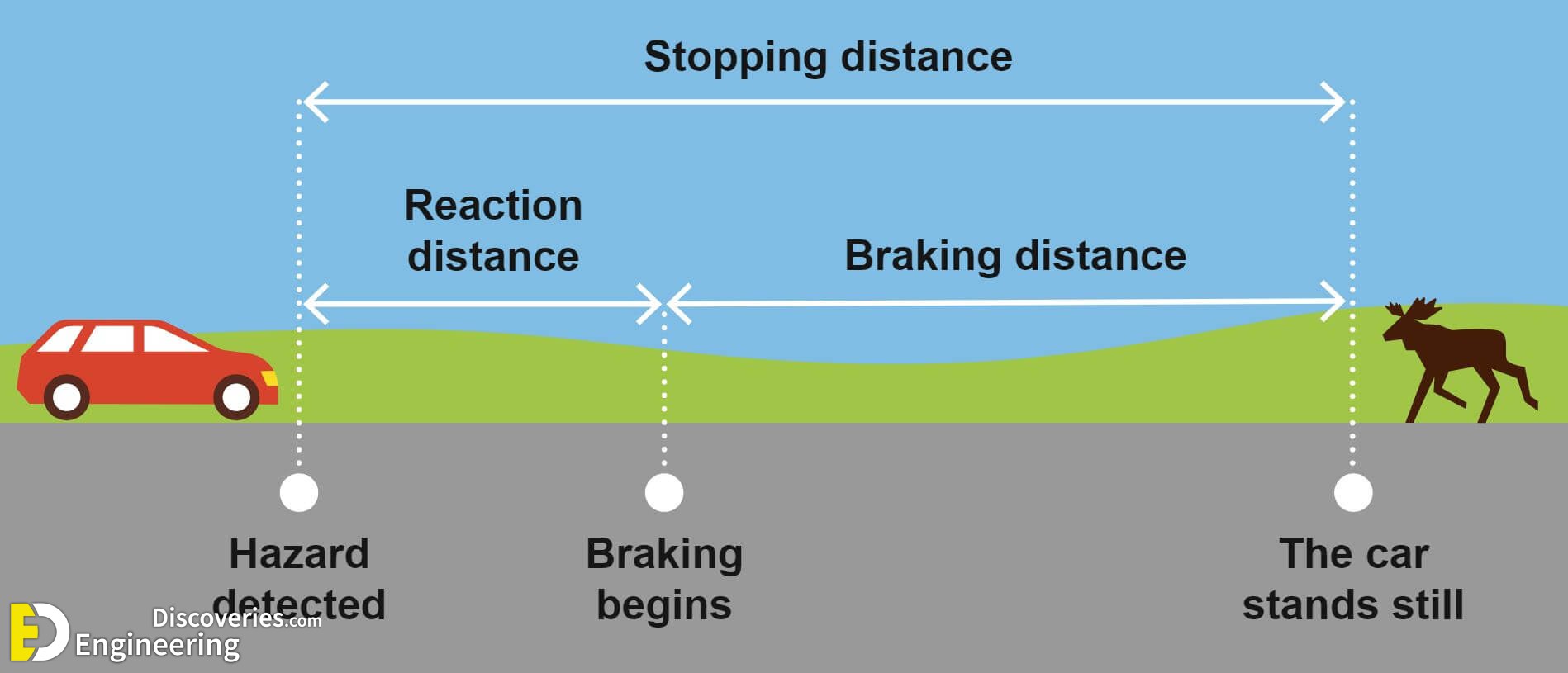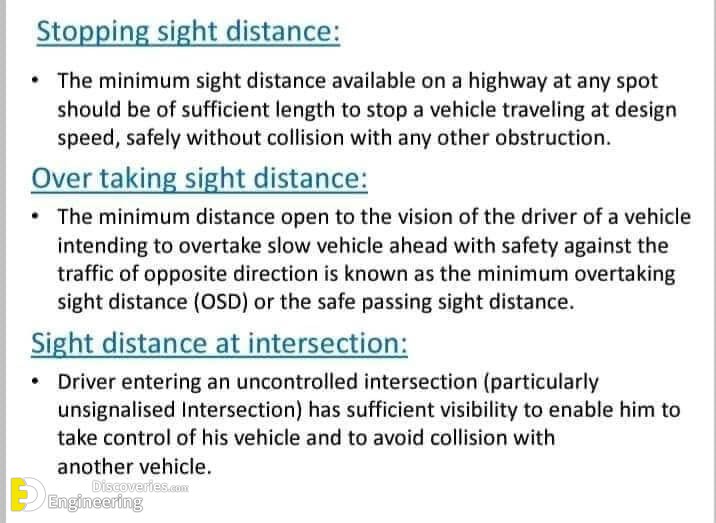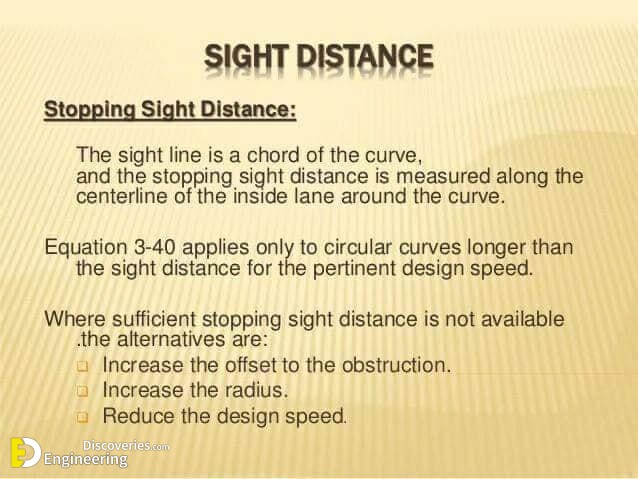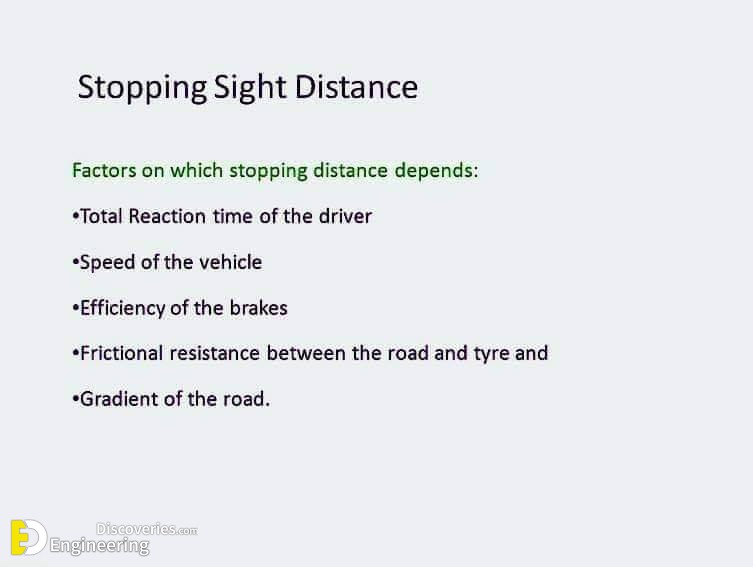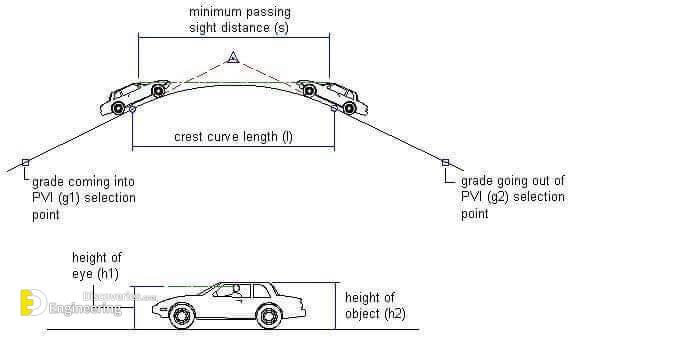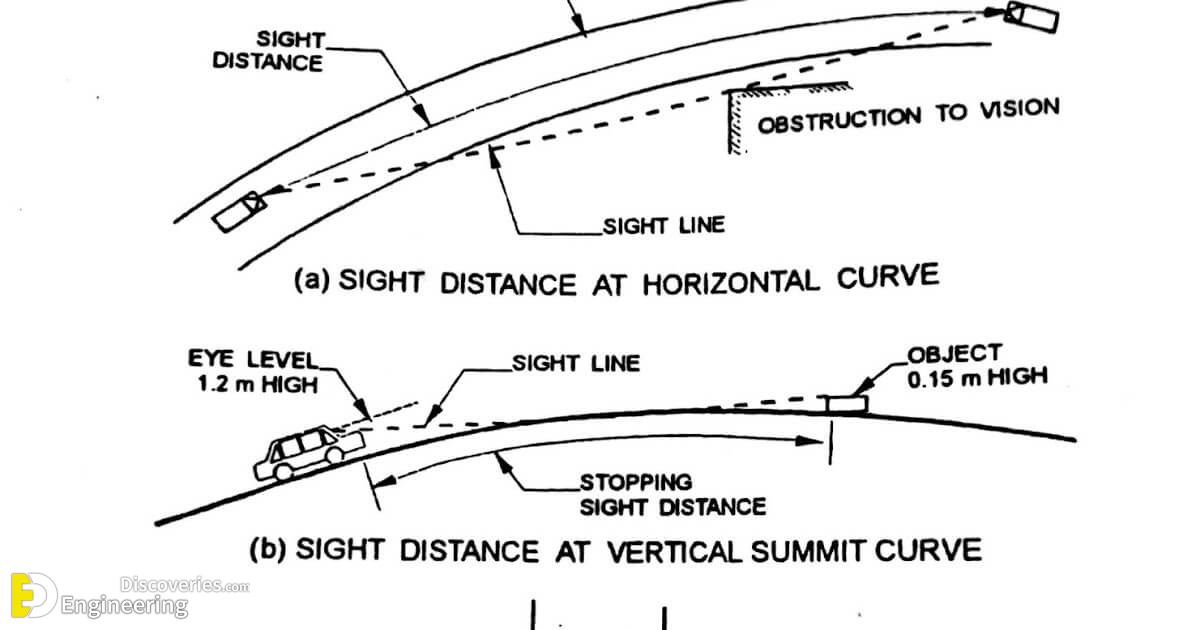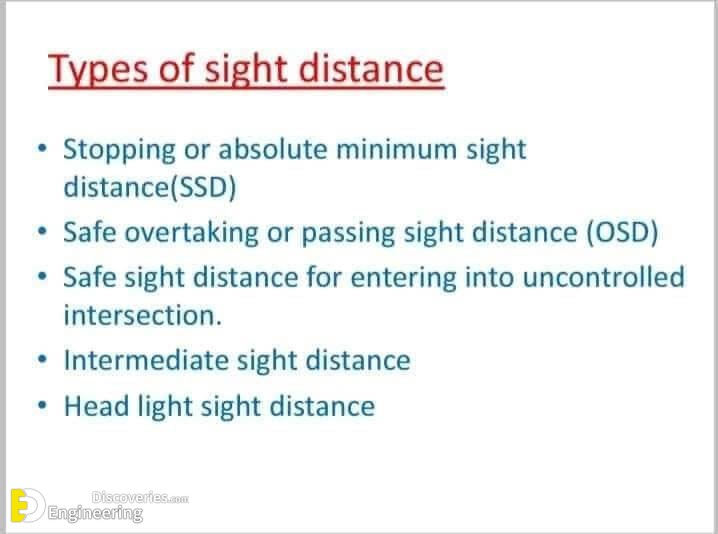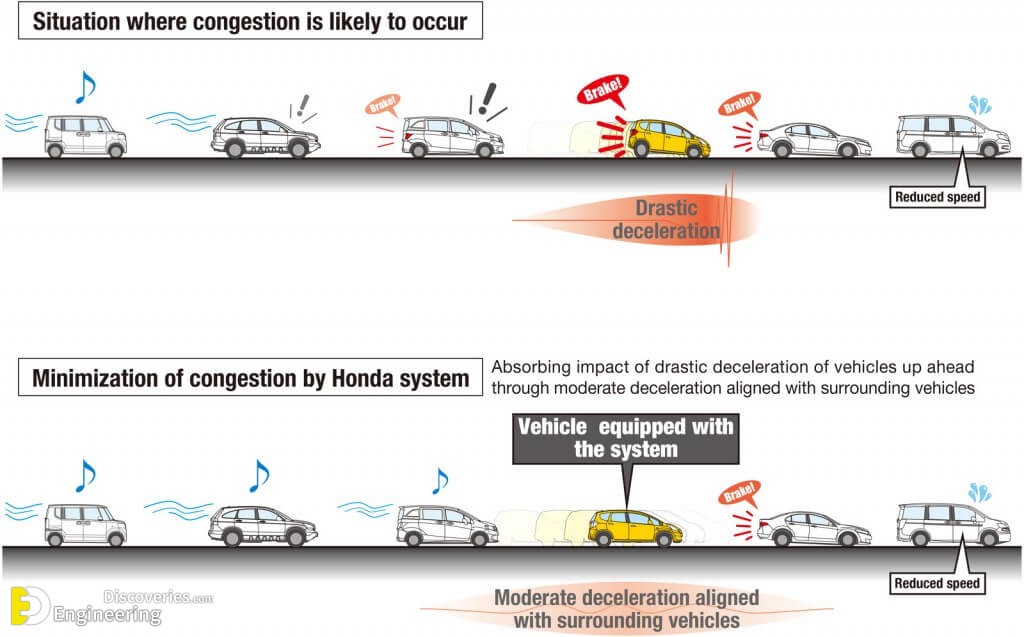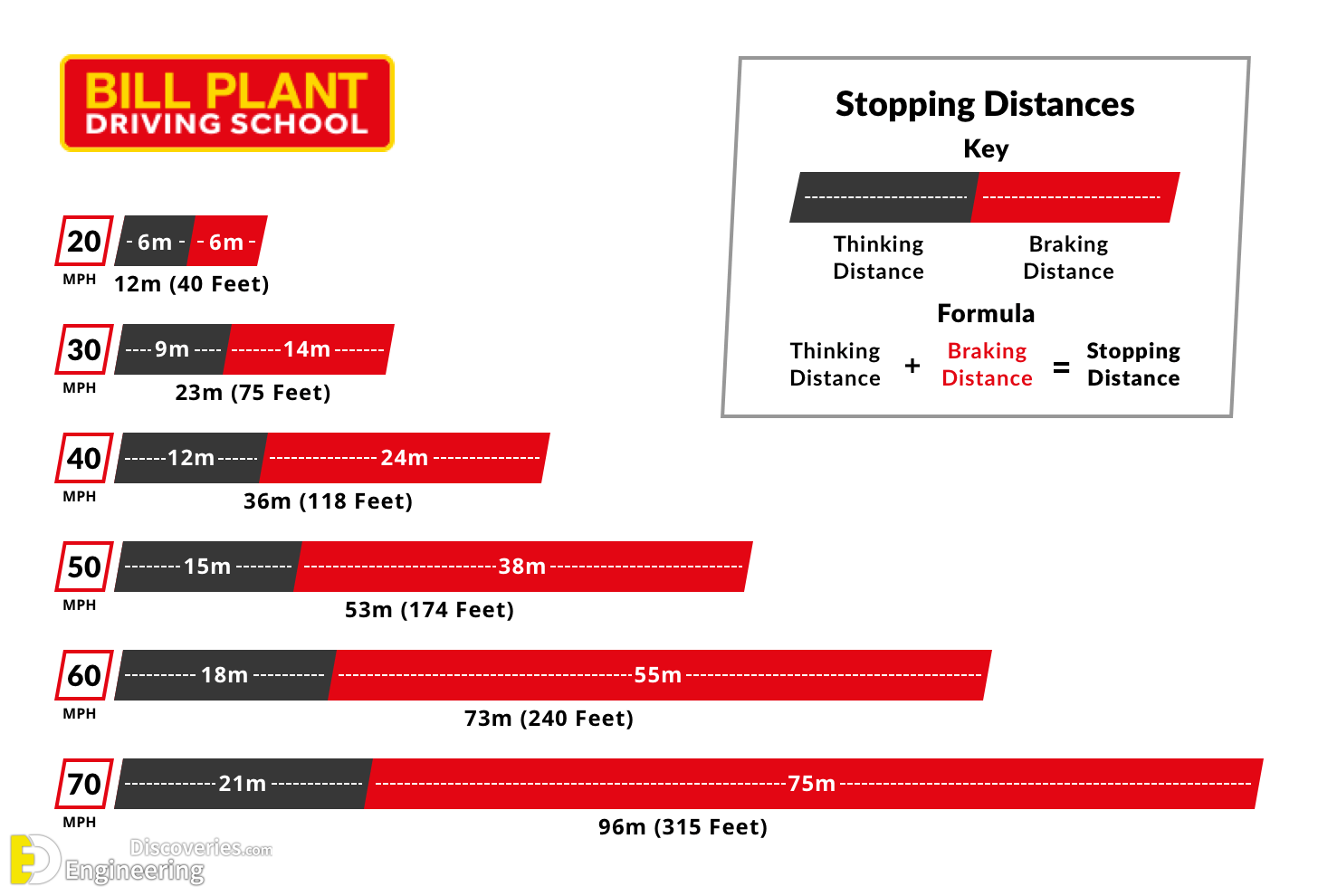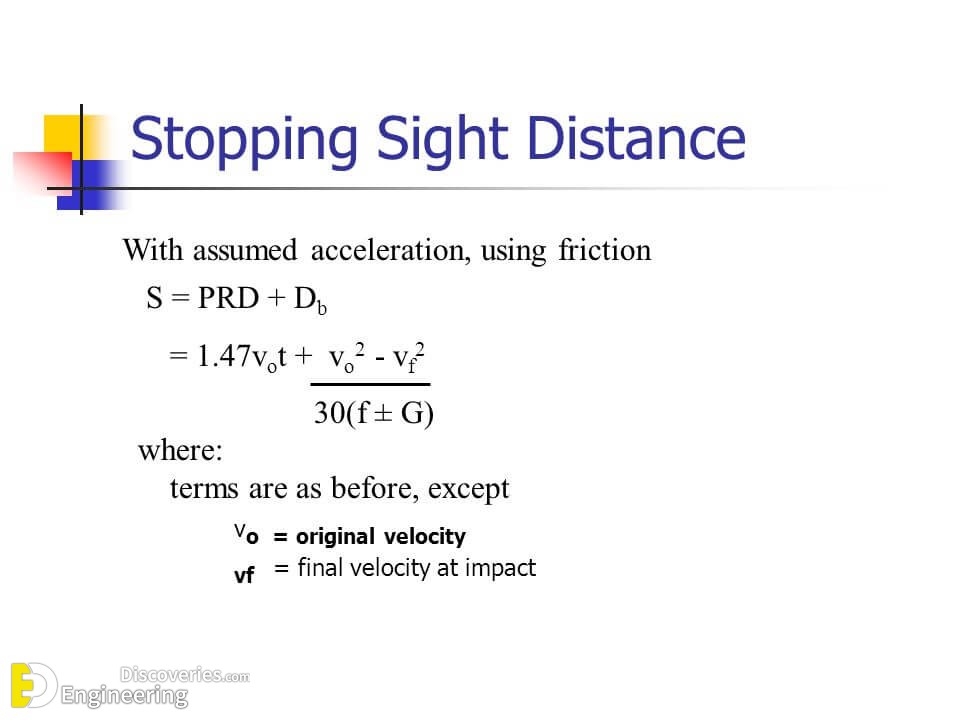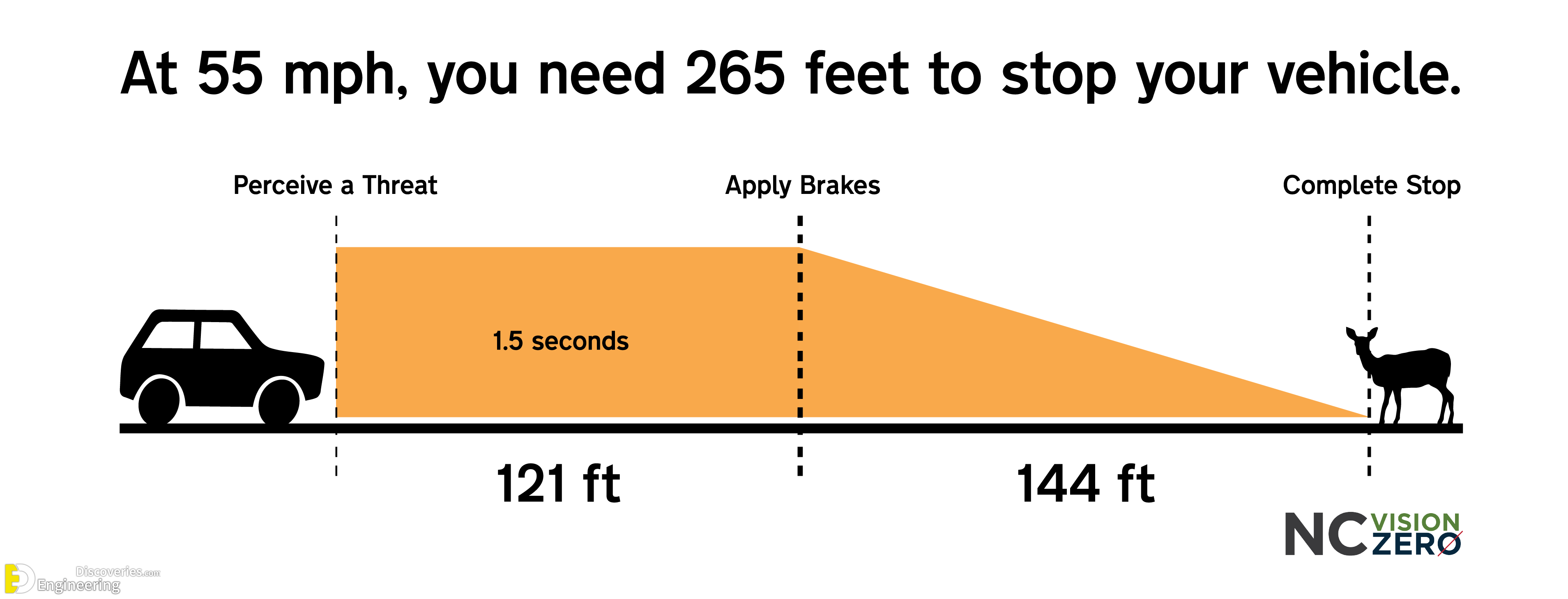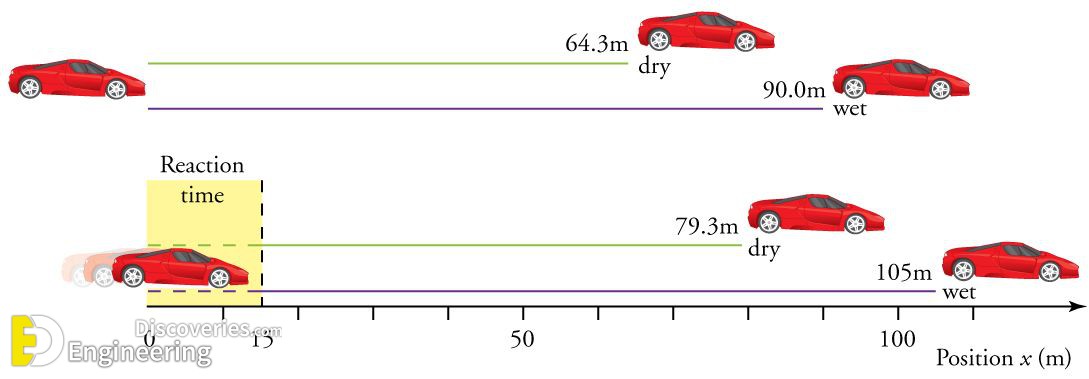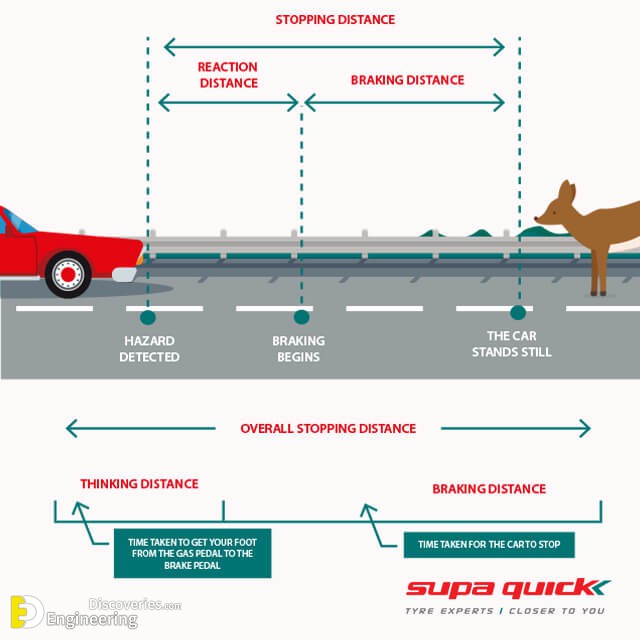Stopping Sight Distance (SSD) is the minimum sight distance for the driver to stop without colliding at any point of the highway. Sight Distance is the length of road which is visible to the driver at any instant. If we are driving at 80 kmph, and suddenly we see a pedestrian crossing, we should be able to see them before so that we are able to react and brake without colliding. This distance is known as stopping sight distance)
It can be formally defined as the minimum sight distance for the driver to stop without colliding at any point of the highway. It depends on
1- The total reaction time of the driver
2- Speed of vehicle
3- Efficiency of brakes
4- Gradient of road
5- Friction
For two way traffic without median – 2 times SSD is the stopping the sight distance
The total reaction time of the driver
Perception time (We realise that we have to stop) and Brake reaction time (Time to apply the brakes)
PIEV Theory
1- Perception – Sensation received by the brain
2- Intellection – Understanding the situation (that you have to apply the brakes)
3- Emotion – Feelings (like fear, sad)
4- Volition – Time taken for final action (applying the brakes)
Stopping Sight Distance Calculation
1- Kinetic energy is equated to the work done to apply the brakes – Braking distance
2- Reaction time varies. For young drivers, it can be 1-2 sec and older drivers it can be as high as 3-4 seconds.
3- SSD will be more when you are going downhill (downward slope). Use minus n/100 in the formula. For upward slope, use +n/100.
4- Friction coefficient varies from 0.3-0.4


